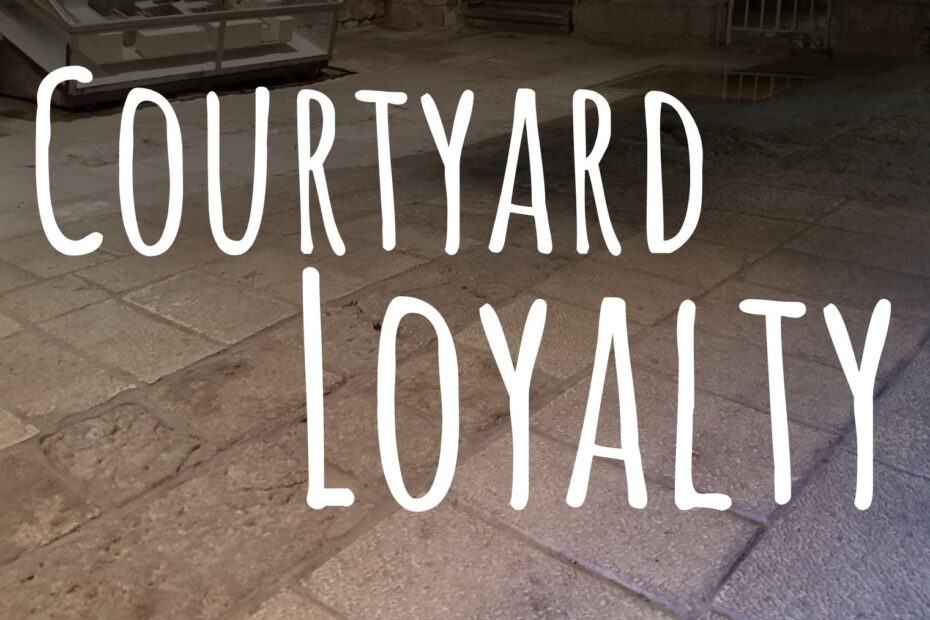Has there ever been someone in your life who could give you “the look”? Without a word, the facial expression directed toward you spoke a clear message. Can you envision the look? What was that look meant to communicate? The right look can stir up a great amount of emotion.
Like locking eyes with your dad after crashing his Corvette or the first time making eye contact with a significant other after a breakup, uncomfortable emotions emerge when we get the look from someone we have disappointed or betrayed.
Peter experienced that look. In Luke 22:61 Peter and Jesus lock eyes. That very evening Peter had emphatically professed his loyalty to Jesus when he was with Jesus on the Mount of Olives. But in that courtyard, Peter’s loyalty faltered. In that courtyard Peter experienced the look from the one he had betrayed. Let’s enter this story to process our own loyalty to God. Allow the courtyard to be symbolic of the place where your loyalty is tested.
Peter was the one who vowed he would lay down his life for Jesus (John 13:36-37).
Peter was the one who had drawn a sword to defend Jesus (John 18:10).
Peter was the one who followed Jesus after he was arrested (Matthew 26:58). Where were the others?
Peter was the loyal one. And he knew it. With his feelings of loyalty, it was hard for him to hear Jesus’ prediction that he would deny him (Luke 22:31-34).
Verse 54 takes us to the “middle of the courtyard” where Peter uttered his first denial, “Woman, I do not know him.” (Verse 56-57). Then a second denial, “Man, I am not” (Verse 58). Then a third denial came, “Man, I do not know what you are talking about.” (Verses 59 and 60).
Despite the differences in the gospel accounts. All four agree that Peter denied his Lord three times on the night of Jesus’ betrayal in the courtyard of the high priest, and that a cock crowed “immediately” after the third denial. Luke tells us that the rooster crowed “while he was still speaking” (Verse 60). And that is when it happened, the “Lord turned and looked at Peter” (Verse 61).The look! We know that courtyard was charged with emotion because Peter “went out and wept bitterly.” (Verse 62).
The courtyard was a scary place. In the courtyard it wasn’t popular to be associated with Jesus. And in the courtyard Peter found his loyalty to Christ sink below his desire for self-preservation.
Have you spent some time in the courtyard? Have you been pressured by life to disassociate yourself with Jesus? Have you felt the loving but betrayed eyes of Jesus connect with yours? Have you been pierced by the look? Have you gone out and wept bitterly?
I invite you to dwell in the discomfort of the look. Don’t look away. Pause right there. Let yourself be seen by Jesus. And let yourself see him. What does he see when he looks at you? What have you experienced in the courtyard? Be honest.
More important than what Jesus sees in us is what we see in Jesus. Do you see someone who is angry with your lack of loyalty? Is that look a look of disdain? If Jesus wanted to communicate rejection in that look, he would not have later invited Peter to follow him (John 21:19). When we make eye contact with Jesus and he sees us in the courtyard of our disloyalty, his eyes are filled with love. The look is uncomfortable because it exposes us. But the look is exactly what we need. In the very place where our sin is exposed to God, God’s love is exposed to us. Don’t resist being seen by God. Don’t miss seeing the love in his eyes. Don’t misinterpret the look. When Jesus gives us “the look”, it’s always a look of love.
